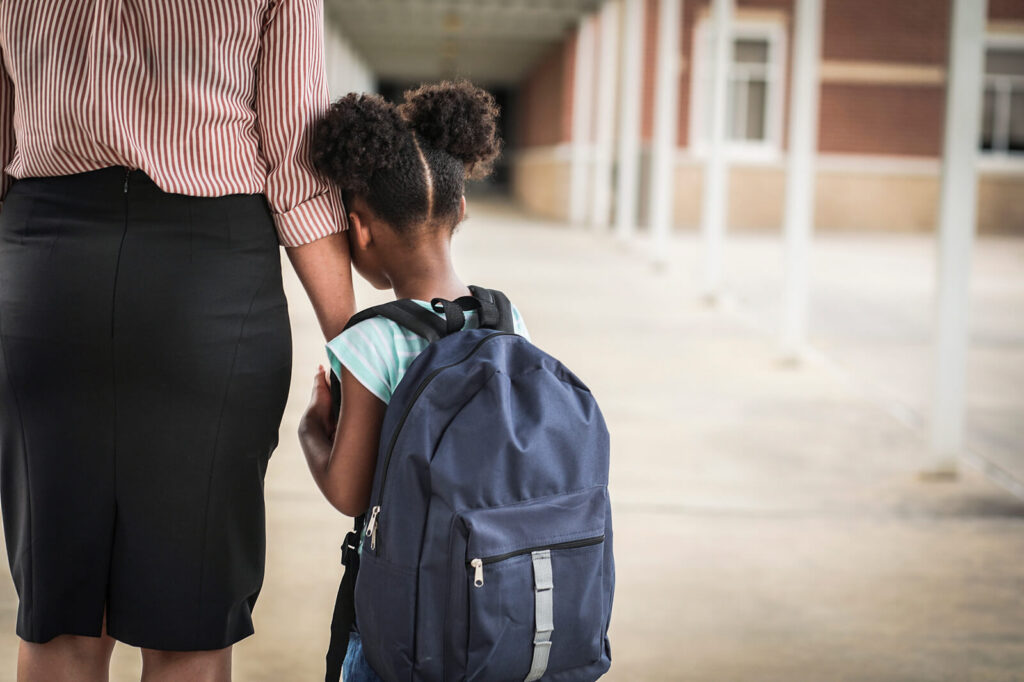Moving to a new home or school can be a stressful experience for children. Their routines are disrupted, their familiar surroundings change, and they’re thrust into unfamiliar environments. With careful planning and consideration though, parents can ease the transition and help their kids adapt smoothly.
Before the Move

Have Open Discussions
Begin by having open and honest discussions about the move. Explain the reasons for the move, show them pictures of the new home, and discuss the exciting new things they can expect. Make sure they understand they can always talk to you about any concerns or questions they might have.
Make a Visit
If possible, visit your new home and the surrounding areas before the move. This allows your kids to familiarise themselves with the new neighborhood, their new school, and any local parks or recreational areas.
Pack Together
Involving your children in the packing process can help them feel more invested in the move. If they are old enough, allow them to pack some of their own belongings – this helps them understand that their favourite toys and items are coming with them to the new home.
During the Move

Hire Professionals
Moving can be a hectic process – that’s why hiring the best removalist in Sydney can be a wise choice. Professionals can help alleviate stress and give you more time to focus on your children; not to mention ensure that all your belongings are safely transported to your new home.
Keep Familiar Items Accessible
It’s important for kids to have access to their favourite toys, books, or blankets during the move. Having these items will provide them with a sense of comfort and normality during this potentially unsettling time.
After the Move

Maintain Routines
Maintaining routines can help children adjust to the new environment more easily – try to keep mealtimes, bedtimes, and other routines as consistent as possible.
Unpack their Rooms First
Unpacking your children’s rooms first can help them adjust and feel comfortable more quickly. This way, they’ll have a space where they feel secure and familiar, even among all the newness.
Encourage Participation in Local Activities
Enrolling your children in local activities or clubs can help them make friends and feel more at home in the new community. This could be a local sports team, art class, or after-school club.
This not only helps children familiarize themselves with their new surroundings but also presents opportunities for them to engage in fun and enriching experiences. Take leisurely walks in nearby parks, visit playgrounds, and find out about local sports teams or clubs. Discovering museums, libraries, and other cultural attractions can also introduce children to the unique offerings of their new community. Through exploration, children can develop a sense of connection to their new environment and begin to feel more at home.
Communicate with their New School
Make an effort to maintain good communication with your children’s new school, as this allows you to stay informed about their progress and any potential issues that may arise. Don’t hesitate to address any concerns with the school administration or teachers.
Creating Stability During the Transition

Supporting Emotional Adjustment: Dealing with Homesickness and Anxiety
Moving to a new home or school can be an exciting adventure for adults, but for children, it can often bring about feelings of homesickness and anxiety. It’s important for parents and caregivers to provide support and understanding during this time of emotional adjustment.
First and foremost, it’s crucial to validate your child’s feelings and let them know that it’s normal to miss their old home and friends. Encourage open communication and create a safe space for them to express their emotions. Listen attentively and empathize with their concerns.
Maintaining a sense of familiarity can also help ease homesickness. Unpack their belongings as soon as possible and try to recreate their old room’s layout and decorations. This can provide a comforting environment amidst the unfamiliar surroundings. Additionally, keeping some familiar routines from their previous home, such as bedtime rituals or family traditions, can provide a sense of stability.
Encouraging social connections is vital in helping your child adjust to their new environment. Arrange playdates with neighbors or classmates, enroll them in local clubs or activities that align with their interests, and foster opportunities for them to make new friends. By connecting with others, they can build a support system and feel a sense of belonging.
If your child’s anxiety or homesickness persists, consider seeking professional help. A counselor or therapist experienced in working with children can provide valuable guidance and strategies to help them navigate their emotions. Remember, reaching out for support is a sign of strength and prioritizing your child’s emotional well-being.
By providing understanding, maintaining familiarity, and fostering social connections, parents can play a crucial role in supporting their child’s emotional adjustment during a move. With time and support, children can adapt and thrive in their new home or school.
Self-Care for Parents: Managing Stress and Prioritizing Well-being During the Transition

During the process of moving with kids, it’s crucial for parents to prioritize their own well-being and practice self-care. Managing stress and taking care of one’s physical and mental health is essential to navigate the transition smoothly. Find moments for relaxation and self-reflection, whether it’s through meditation, exercise, or engaging in hobbies. Seek support from friends, family, or support groups to share your experiences and emotions. Set realistic expectations and delegate tasks when possible. Remember that taking care of yourself allows you to better support your children through the transition. By prioritizing self-care, parents can maintain their own equilibrium and provide a stable and nurturing environment for their children.
Final Thoughts
A move can be a big transition for children, but with these tips in mind, you can help them adjust more easily to their new home or school. Remember, open communication, consistency, and reassurance can go a long way in ensuring your child feels secure during this significant change. And, hiring a trusted removalist can make the process much smoother, allowing you more time to focus on your child’s emotional needs.







